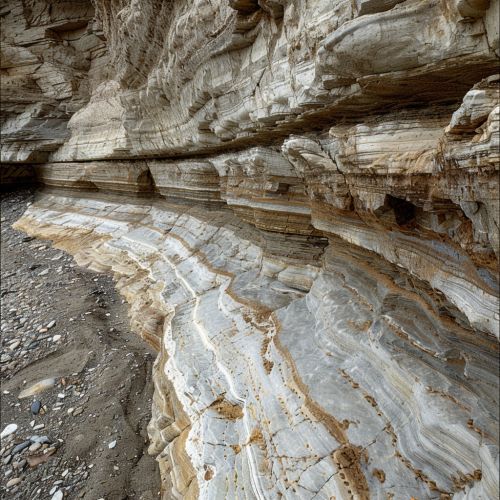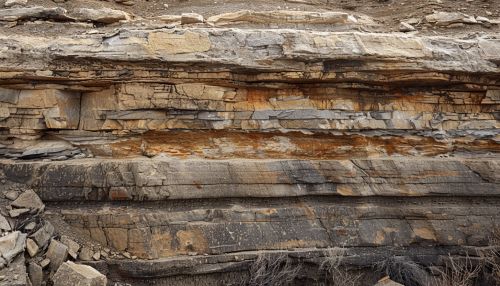Cretaceous–Paleogene Boundary
Introduction
The Cretaceous–Paleogene (K–Pg) boundary is a geological signature, usually a thin band, dated to approximately 66 million years ago. It is the boundary between the Cretaceous and Paleogene periods, formerly known as the Tertiary period. This boundary marks a major change in the Earth's biodiversity due to a mass extinction event, which affected a vast number of species, including the non-avian dinosaurs.


Geological Evidence
The Cretaceous-Paleogene boundary is identified by a thin layer of sediment, known as the K–Pg boundary clay. This layer is rich in the rare earth element iridium, which is more common in extraterrestrial objects than in the Earth's crust. This iridium anomaly led to the development of the Alvarez hypothesis, which posits that the mass extinction event was caused by the impact of a large asteroid or comet.
Mass Extinction
The Cretaceous-Paleogene extinction event is one of the five major extinction events in the history of the Earth's biodiversity. It is estimated that approximately 75% of all species became extinct during this event. The most famous group of organisms that went extinct are the non-avian dinosaurs. However, many other groups of organisms, such as pterosaurs and ammonites, also became extinct. The extinction event marks the end of the Mesozoic Era, the Age of Reptiles, and the beginning of the Cenozoic Era, the Age of Mammals.
Alvarez Hypothesis
The Alvarez hypothesis is a theory that explains the mass extinction event at the end of the Cretaceous period. It was proposed by the Nobel Prize-winning physicist Luis Alvarez and his son Walter Alvarez, a geologist. According to this hypothesis, the extinction event was caused by the impact of a large asteroid or comet, about 10 to 15 kilometers in diameter. The impact would have caused a massive dust cloud that blocked sunlight and led to a significant drop in global temperatures, a phenomenon known as an impact winter.
Chicxulub Crater
The Chicxulub crater, located in the Yucatan Peninsula in Mexico, is believed to be the impact site of the asteroid or comet that caused the Cretaceous-Paleogene extinction event. The crater is more than 180 kilometers in diameter and 20 kilometers in depth. It was discovered in the late 20th century through a combination of geophysical evidence and the presence of shocked quartz, a form of quartz that is altered by extremely high pressures.
Impact on Biodiversity
The Cretaceous-Paleogene extinction event had a profound impact on the Earth's biodiversity. It marked the end of the dominance of dinosaurs and the rise of mammals. The extinction event also led to the diversification of birds, which are the only surviving group of dinosaurs. In the oceans, the extinction event led to the decline of large marine reptiles and the rise of fish and marine mammals.
Recovery and Evolution
Life on Earth took several million years to recover from the Cretaceous-Paleogene extinction event. The recovery was marked by the evolution and diversification of many new groups of organisms. Mammals, which had been small and nocturnal during the Mesozoic Era, evolved into a wide variety of forms, including large herbivores and predators. Birds, the only surviving dinosaurs, also diversified into many new forms. In the oceans, fish and marine mammals became the dominant predators.
Conclusion
The Cretaceous-Paleogene boundary marks a significant turning point in the history of life on Earth. The mass extinction event that occurred at this time led to the end of the Age of Reptiles and the beginning of the Age of Mammals. The cause of this extinction event, the impact of a large asteroid or comet, is one of the most dramatic events in the Earth's history.
